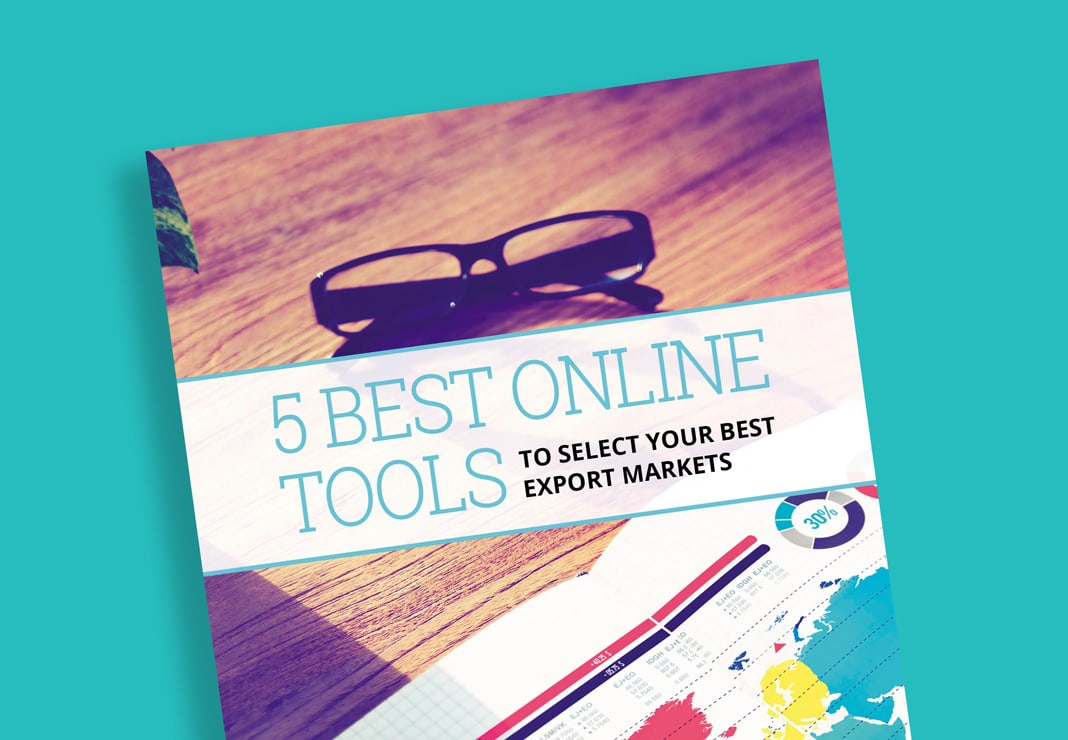For centuries, companies have ventured abroad in search of more opportunities. And with the first conquests, they have started realizing that with great opportunities come great risks. Some companies tend to be more risk averse and others will grab the opportunities ahead and will have no particular fear of all the events that may or may not take place and will have possible negative consequences on the company. However, being aware of the possible negative events and mitigating them allows companies to successfully carry out their international strategy and grow successfully.
Nowadays, internationalization has become a necessity for many small and medium-sized companies. This necessity makes these companies exposed to risk. Smaller companies are more vulnerable due to their characteristics such as its size and its lack of experience abroad and the lack of tools of anticipation and mitigation of these risks. This can jeopardize the company’s survival.
Internationalization is a step that can open up the company with new practices, organizations in order to adapt to the specificities of the chosen country. This article will allow us to examine the main risks that SMEs encounter in their internationalization and how it is possible to mitigate them.
What are the pitfalls of going international for SME’s?
As all entrepreneurs know, the more attractive a new market is, the greater the opportunities it brings and the greater challenges will be involved.
Risks linked to political, economic and legal environment
Some challenges encountered during internationalization are indeed also present in the local market, such as economic risk. You know how difficult it is to predict the demand for a specific product or service locally and even more in a foreign country. Face volatility in the number of sales and therefore in the turnover is the main risk. Economic risk intensity evolves according to the selected market. Developing countries know higher fluctuations in demand than developed countries.
Governmental decisions may have a negative impact on your company’s activity. These events fall under political risk. An armed conflict is a good example that will impact the turnover and the development of your company, following the destruction of infrastructures, economic sanctions or variations in the price of raw materials. The invasion of Ukraine by Russia and the government sanctions against Russia have forced many companies to suspend their activities. This is the case for such MNCs as Coca-Cola, Hermes, Uniqlo and Starbucks and hundreds of SMEs who invested and believed in these markets.
An additional aspect to consider is the legal environment of a country. The more unstable it is, the greater the risk for the SME. It is useful to know if the countries you target respect contractual rights and have a clear independence of the courts and that judges are free to exercise their judicial powers without interference from the state or other authorities. In case of a disagreement following the signature of a contract, you need to be able to rely on a sound legal environment that will make it easier to find a way out. Regulatory stability is sought by multinationals and SMEs and creates favorable conditions to conduct a business with a long-term vision. The example described in the article “Multinationals wary of unpredictable legal environment” by UNCTAD explains strikingly well the complexities companies try to avoid on international markets.
Management & SME’s structure
Through exporting, your company also must succeed in transforming its organization and management, moving from a local to an international dimension. The challenge is to excel at coordinating geographically dispersed resources. Management of stocks, personnel or infrastructure can quickly become complex if the organization is not geared and ready for the task.
Usually internationalization means an increase in the number of employees bringing diversity and new competences. They may not share the same culture, habits and expectations. Having employees worldwide requires success in intercultural management.
Geographical distance between you and employees in the four corners of the world is also an exciting challenge in terms of remote management. The lack of formalization and the short decision-making process that are specific to the SME structure can be detrimental to your international development. Limited information sharing and coordination between the headquarters and entities abroad complicate the access and implementation into the targeted market.
Resources
You have understood by now that internationalization requires mobilizing resources. Just as a traveler discovers new countries, an SME must prepare its suitcase well. The CEO should sufficiently plan the company’s resources and skills. Allocation ressources impact on the decision to internationalize, the choice of markets, but also on the internationalization process. A lack of financial, human and technological resources could jeopardize the company’s international development. Keep in mind that, on average, a company has the necessary resources to develop in one or two countries per year. All costs need to be well anticipated in your business plan to avoid any surprise. For example, the start-up WeWork, which develops coworking spaces, has experienced this. Its fast international expansion required significant real estate investments. Having lacked anticipation of the financial real estate needs, the company turned to banks and investisseurs for long term loans. Doing it involves structural changes in the business plan, financing the assets necessary for its internationalization with long-term loans while its rental income was short-term. Banks and investors refused to finance Wework because the change in business plan threatened the sustainability of its business model.
Product market fit analysis
Consumers’ needs can vary from one country to another linked to cultural differences. Demand is linked to the customers needs and can therefore vary according to customers’ origin. To meet the demand, the challenge is to succeed in adapting sufficiently marketing strategy to these local specificities without keeping the cultural spectrum of your company’s country of origin. These market differences may seem minimal, but your future customers may be sensitive to certain details. An incorrect translation, a color of packaging, a behavioral habit and your product may never reach your target audience. Some brands, although present in many countries, have not succeeded in establishing themselves in certain regions for cultural reasons. Sephora was one of them when it set up a shop in Japan. In 1999, the company specialized in the distribution of perfumes did not manage to identify the fact that the Japanese wear little to no perfume. In their culture, it is impolite to impose a smell on someone.
Tools to mitigate risks
In search of new opportunities abroad, the SMEs face economical, cultural and managerial challenges. In order to mitigate the risk and access new markets successfully, CEOs have several tools and resources at their disposal.
Getting informed and assisted
In a global environment, companies evolve in dynamic and changing conditions. Going international reinforces this dynamic and it is important to be informed about market trends. Import and export data related to a specific product are easy to access. As a CEO, you need these updates to better understand the evolution of the demand for the products or services marketed by your company. By intercepting trends in demand fluctuations you will be able to reduce economic risk. Be curious and participate in workshops, conferences or webinars which will help you improve your knowledge on export and targeted markets.
Don’t hesitate to call on a consultant to help you with country selection, international strategy and go-to-market strategy. His or her expertise will allow you to have all the cards in hand to lead your internationalization. Many governments are pushing small and medium-sized companies to go international by offering assistance, finance and support services.
Choosing the right country
Making the right choices when selecting an international market is a key success factor. SMEs have a tendency to develop markets following an opportunity without strong market and potential analysis. Usually, they would prefer to enter markets that are geographically close. They seem less risky but they do not necessarily allow the sustainability of the company’s activity. Although many countries may seem interesting, you should select the countries with the highest potential for a successful international strategy. By selecting the best countries to expand in, an SME will considerably reduce its risks when setting up abroad. Find more detail about it in this article “How to evaluate international market potential?“.
Choice of entry mode
The choice of entry mode will affect the level of control and risk. The choice of entry mode can be influenced by several factors. Government regulations, taxation, competition, and industry specifics may all weigh into your choice. Keep in mind that in order to maximize your company’s chances of success internationally, it is necessary that your decisions be in line with your strategy. Choosing your entry mode before a detailed analysis of the target market drastically increases the risk of failure. Exportation’s method is the most used by SMEs as they present less investments and risks. However, this entry strategy is not always in line with the company’s image and strategy and you should consider other entry modes as well. For example, l’Occitane has chosen to go international by opening its own shops in Hong Kong, New York and Tokyo. A costly choice but one that will allow the brand to keep its identity and to enhance its origin, two essential axes in L’Occitane’s strategy.
Export Insurance and Credit Risk Insurance
Until now, the tools indicated to limit the risks of internationalization were internal covers, but there are also external tools. These are various paid insurances that are contracted with private or public insurers or directly on the financial markets. Insurers can cover the risks of non-payment and non-transfer. You can use export credit agencies that insure risks in order to push your company’s internationalization or attract foreign direct investments. For example, in France, the Banque Publique d’Investissement (BPI) offers various solutions. These solutions may be prospection, foreign exchanges, investments and export guarantee insurance. They allow companies to limit the risks faced by companies in their international development.
To cover exchange, credit and interest rate risks, it is possible to use services on the financial markets. The only drawback is that these products are quite expensive, so we advise small and medium-sized companies to contact export credit agencies or import-export banks. These agencies and solutions are available in different countries, contact the export department of your government to know the modalities of the solutions listed are present
Key takeaways
Going global opens up new opportunities and at the same time new challenges and risks. They can be internal or external, linked to culture, economics, politics, management of resources.
In order to mitigate these risks, companies have several solutions at their disposal. Upstream, it is important to build an international strategy by taking the time to learn about trends and analyze the different markets. These steps help identify the best potential markets and appropriate entry modes to maximize chances of success. If, despite all these efforts, certain risks are still influencing your activity, it is always possible to subscribe to insurance policies to cover certain specific risks. Every opportunity comes with challenges. Companies must learn to understand them in order to succeed in internationalization.
How Prime Target can help you with your internationalization and identification of potential markets:
Prime Target offers to assist companies in the selection of markets to target. Our solution is delivered in the form of a top 5 to 20 countries with fully customized recommendations. Click here to find out more




